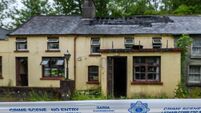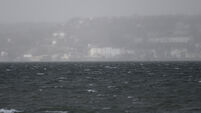Central Bank must tackle the ticking bomb that is mortgage debt on devalued homes
It must belatedly stamp its authority on this sector beyond the issue of foreclosure prevention and instil the discipline of responsible lending and borrowing.
The ‘men-in-red-braces’ who define our sovereign financial standing will have noted, with curiosity, the recent remarks of Matthew Elderfield to an Oireachtas committee concerning the level of mortgage arrears.
The financial regulator told the committee that 36,000 mortgages are in arrears. That figure is the tip of a massive and threatening iceberg. The underlying loans involved amount to €6.9bn and the level of mortgage arrears has increased by 44% between September 2009 and last June. The low level of repossession cannot conceal the underlying ugliness of dire supervisory failure.
There are approximately 791,000 mortgages outstanding in Ireland. But the statistics available to Mr Elderfield did not provide the full picture with respect to distressed mortgages – the number of rescheduled loans, those paying interest only, the incidence of interest deferred or the number who have obtained extended loan terms.
How can the Central Bank deal comprehensively with this matter when faced with so many blind spots?
Approximately 420,000 home loans were paid between 2003 and the end of 2006 with an underlying liability of €77.4bn.
But the value of residential property has fallen by 35.2% nationally since the end of 2006, according to the latest Permanent TSB/ESRI index. This means the potential negative equity component of residential properties mortgaged between 2003 and 2006 is €27bn. High mortgages, collapsing property values, depressed levels of disposable income, chronic unemployment, spiralling mortgage costs, the predominance of variable rate mortgages combine to make debt servicing an even more volatile, if not a totally impossible, ordeal.
The number unemployed has increased from 88,700 to 293,600 (+231%) and the number on the live register has increased from 155,389 to 419,854 (+170%) from the end of 2006. More than 70,000 mortgage-holders in 2006 earned an income of €25,000, or less.
The implications of these trends on the true level of mortgage distress are staggering. But banks and building societies have a vested interest in not recognising a loan to be in arrears because it obliges them to increase their core capital. Any evidence of compassion is certainly not stimulated by vicarious concern for their customers whom they seem content wantonly to fleece over and over again.
The longer-term recovery of the residential property market demands that house prices are directly connected to fundamental factors that sustain our economy and the capacity of people to afford them.
The Central Bank must issue very clear guidelines with respect to the maximum income and value-to-loan ratios that are acceptable and retrieve Ireland’s beleaguered mortgage-holders from the status of being the second most indebted in Europe. The Central Bank must also publish sufficient statistics to tell the whole morbid story of the consequences when College Green became dysfunctional, unfocused and detached.
Myles Duffy
Bellevue Ave
Glenageary
Co Dublin














